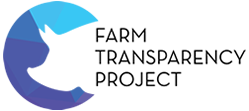News & Media: Documents reveal disturbing details about piggery fires
Documents reveal disturbing details about piggery fires
Documents granted under the NSW Government Information (Public Access) Act 2009 (GIPA) reveal disturbing information about the 2015 fires that killed approximately 250 pigs at the Boen Boe Piggery in Joadja and 2,500 pigs at the Wonga (Windridge) Piggery in Young.
The Boen Boe piggery fire was determined to have been caused by a poorly manufactured electrical plug on the western wall of a weaner piglet shed. The fire spread from this powerpoint up the electrical wiring along the roof, igniting the insulation foam. As the foam burnt, it dropped “flaming molten droplets” onto the pens of piglets below, which then ignited the plastic flooring and resulted in the shed being consumed by fire, and all 250 piglets within being horrifically burned to death, unable to escape.
The Wonga (Windridge) piggery fire was likely to have been caused by a non-maintained electrical heater, suspended above a pen in a shed containing 4000 weaner piglets. A large volume of dust and spider webs around the heater and other electrical equipment may have contributed to the fire. In the pen underneath the heater, bodies of burned pigs were found piled up away from it, indicating that the pigs were scrambling over each other trying to get away from the initial fire. The fire spread to the roof, dropping melted aluminium onto the pigs and setting alight the floor. An estimated 2,467 piglets were burned alive, and a further 33 were later euthanised.
The anonymous individual who applied for the documents under the GIPA Act attempted several times to seek information about these fires from RSPCA NSW, but after several months of no response, was informed that RSPCA were refusing on the grounds that they were a 'charity' and therefore exempt from the obligations of the Act. Despite being one of only two animal welfare agencies in NSW authorised by the government to investigate cases of animal cruelty, and the leading animal welfare agency in the eyes of the Australian public, RSPCA were more interested in hindering members of the public endeavouring to get the truth.
The documents include a cheap shot at activists, with an SMS sent from Fire & Rescue NSW advising that the piggery had been a target of animal rights activists in the past. The document does not point out that the only people who have intentions to kill farmed pigs are the farmers and the slaughterhouses with which they do business, not the activists who work to save pigs and other animals from death.
More generally, the documents expose a blatant lack of maintenance, disregard for fire safety, and disregard for the lives of the thousands of animals trapped in these facilities, by the people who own and operate them with the ultimate intention of killing those animals for money. To those people, these deaths are considered only in financial terms – “loss of stock”. The fires also placed at risk the lives of the firefighters, with one injured at the scene of the Wonga fire. Simple measures such as back to base alarms and sprinklers would no doubt have made an enormous difference.
Imagine the sheer terror and agony endured by every one of those pigs who lost their lives, desperately trying to escape the flames as they were burned alive, nowhere to go, no way to get out. Those who did survive have long since faced similarly terrifying deaths in slaughterhouses, where the most common method of “stunning” involves trapping them in a cage and lowering them into a pit of excruciating carbon dioxide gas.
This is the Australian pig farming industry.
The full documents can be viewed here: Part 1, Part 2


